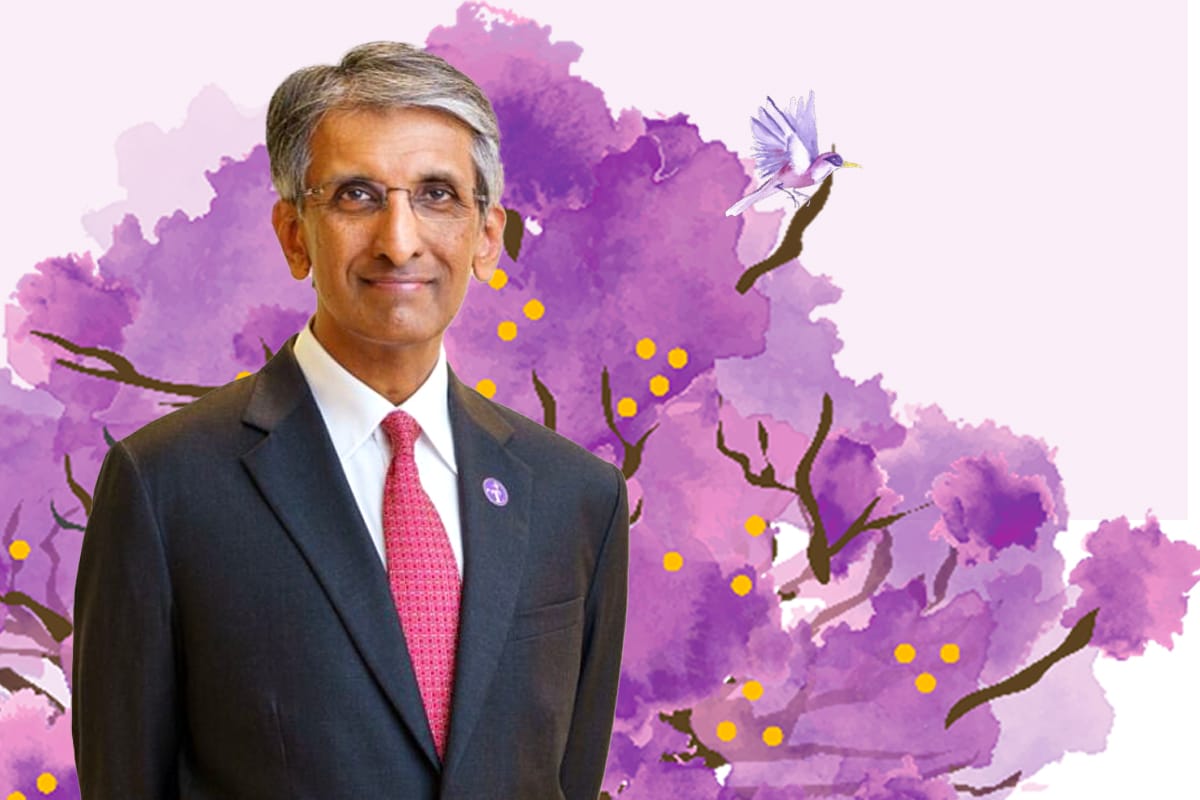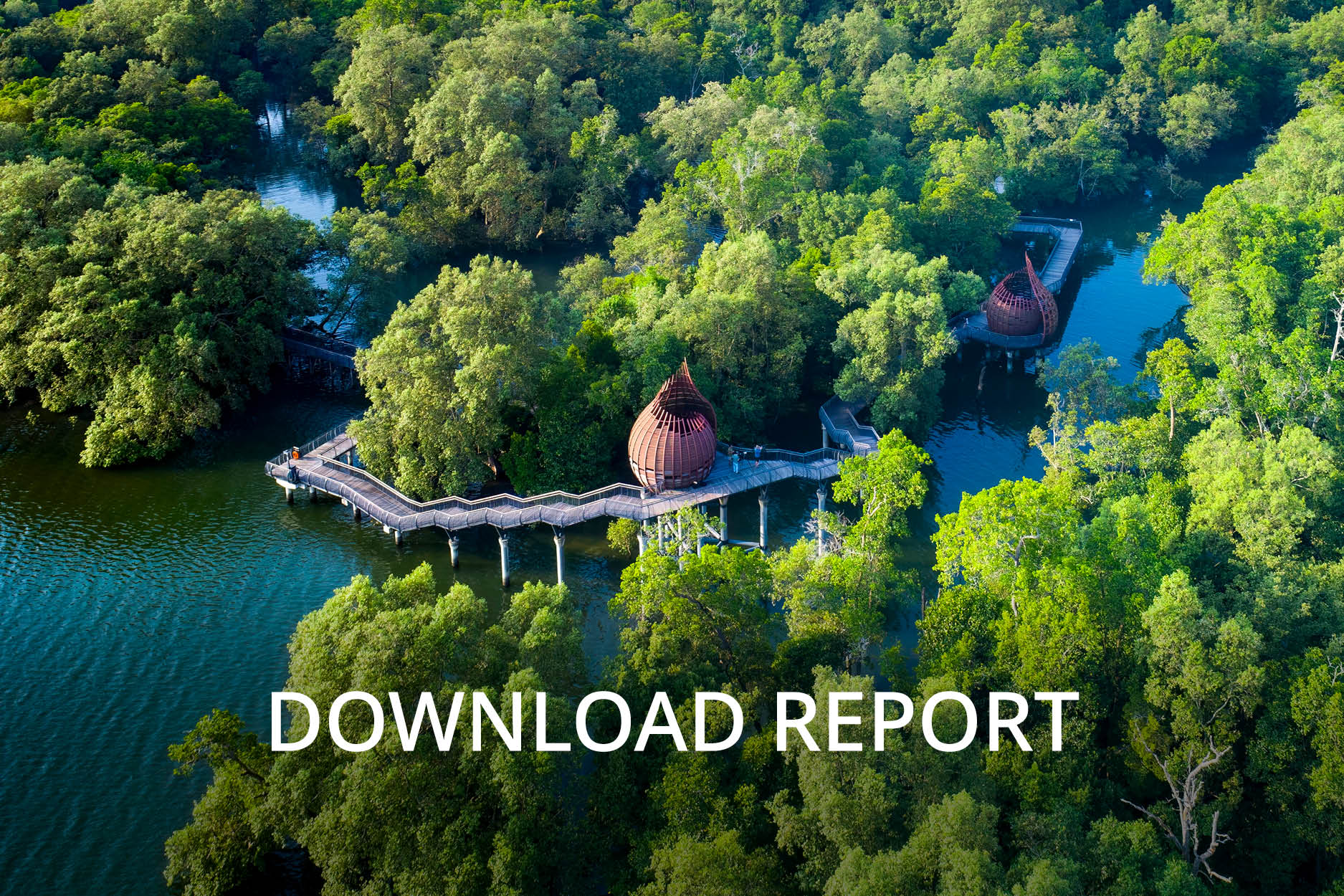Temasek CEO: Why I Back Carbon Tax To Achieve A Net-zero Portfolio
Temasek CEO: Why I Back Carbon Tax To Achieve A Net-zero Portfolio
Dilhan Pillay, CEO of Singapore’s global investment giant Temasek, discusses with Jean-François Manzoni, President of the International Institute for Management Development (IMD), the importance of an internal carbon price and how his company is working to ensure ‘every generation prospers’ without sacrificing profits.

The year 2022 was a turbulent one for financial markets, with rampant inflation and the resulting rate hikes by central bankers leading to the worst stock market performance since the 2008 global financial crisis.
Against this volatile backdrop, Temasek, a global investment company, is doubling down on its mission to build a resilient and forward-looking portfolio with sustainability at its core.
Founded in 1974 to own and manage businesses and assets previously held by the Singaporean government following the city-state’s independence from Malaysia, Temasek has grown from a portfolio of 35 Singapore-based companies with a book value of 354 million Singapore dollars ($261m) to a global investment house worth 382 billion Singapore dollars (as of 31 March 2023).
Ranked among the top 10 investors in the world (according to the Global SWF 2022 GSR scorecard), with average annual returns of 14% since 1974, 6% over the past decade, and 9% over the past 20 years, Temasek owns holdings as diverse as China’s second-largest lender China Construction Bank, German pharmaceutical group Bayer, and Singapore Airlines, and employs 950 people globally.
If you look at all the events that would impact the portfolio over that timeframe (15 to 20 years), you cannot ignore the impact of climate change.
Dilhan Pillay
Dilhan Pillay joined Temasek in 2010 from the law firm WongPartnership with a plan to stay for three years. Thirteen years later he’s still there ̶ not because he was promised a job, but because he became increasingly convinced that pursuing Temasek’s mission to secure prosperity for future generations was more important than what he had left behind.
In October 2021, he ascended to the CEO role just as the investment firm grappled with the economic fallout from the pandemic and rising global trade tensions. Yet this has only emboldened Pillay to double down on Temasek’s mission to help its portfolio companies transition towards a net zero future.
Sustainability at the core
Even before taking over Temasek’s helm, Pillay was involved in shaping the investment firm’s 2030 strategy that identified six key issues that pose current and future challenges and opportunities, among them persistent inflation, geopolitical tensions, and climate change.
This strategy is supported by four pillars, one of which involves putting sustainability at the core. It aims to slash the net carbon emissions of its portfolio to half of 2010 levels by 2030 and achieve net zero portfolio emissions by 2050.
While this is undoubtedly the right thing to do for future generations who will have to deal with the “existential problem” of climate change, Pillay champions the approach and believes it makes good financial sense.
“If you’re a long-term investor, you look at what the value of the portfolio is going to be, not in terms of a three, five, or 10-year timeframe, but even 15 to 20 years,” he said. “And if you look at all the events that would impact the portfolio over that timeframe, you cannot ignore the impact of climate change.”
It’s not just about making financial returns – which are very important – but it’s also about how we uplift communities.
Dilhan Pillay
Pillay admits that reaching some of Temasek’s goals will be a tall order for some of its investments, which include a container shipping company, an airline, and a port business. But he believes setting out a clear and credible vision for how to get there will be rewarded by investors.
“It’s not like a light switch that’s on or off, it’s a journey. But you have to start somewhere,” he said. “You come up with a plan for that journey, figure out how you’re going to transition your business, transform your business, when you’re going to put capital to work for that transformation, and start doing it now because then the long-term value will be ascribed to you by other investors and we will get the benefit too.”
He cites the example of Sembcorp Industries, a power utilities company that hived off its division that developed offshore oil rigs in 2020, to focus on green energy. The new CEO committed to quadrupling its renewables capacity to 10 gigawatts by 2025 – a target he had almost hit by the end of 2022 – and generating 70% of its profit from green investments in the same period.
“The share price has gone up three-and-a-half times. Not because of us – we haven’t bought a single share – but because a new group of investors have embraced that transitional model and is now basically valuing him on his execution capabilities of the vision he has set forward for the company,” explained Pillay.
Internal incentives to decarbonise
Temasek has taken some bold action to ensure its portfolio is fit for the future, including applying an internal carbon price of US$50 per tonne of CO2 to better assess the resiliency of companies in their transition journeys, and prepare for a world in which regulators might force firms to price in the cost of their actions.
The firm expects to raise its internal carbon price progressively to $100 per tonne of CO2 by the end of the decade. One of its existing portfolio companies, the national carrier Singapore Airlines, is in the process of renewing its entire fleet with planes that are up to 30% more fuel efficient. “Now why is that important? Well, because Singapore Airlines emitted 19.6 million tonnes of CO2 equivalent back in 2019, pre-pandemic. And if they go up at that level to $100 per tonne [of CO2 emitted], you’re going to be looking at a bill of almost $2 billion,” said Pillay. “That’s not feasible. So, you’ve got to do things today to reduce that full impact in the future.”
The internal carbon price also acts as an incentive to invest in carbon-negative businesses, which could include sequestration, green hydrogen, and carbon capture and storage. This fits with Temasek’s broader purpose ̶ simplified in 2021 into the statement, “So every generation prospers” ̶ which encapsulates its role as stewarding today’s assets for the benefit of current generations as well as those who have not yet been born.
“I believe that we are here to ensure that future generations benefit from what we do today. At the end of the day, it’s not just about making financial returns – which are very important – but it’s also about how we uplift communities,” he said. “We have a responsibility, with others, to create a better world for future generations.”
Watch the full CEO Dialogue to hear more about Temasek’s evolving investment strategy, his view on China’s economic prospects, and how the investment firm has built centers of excellence in AI, blockchain, cyber, and digital transformation to add value to its portfolio companies.
